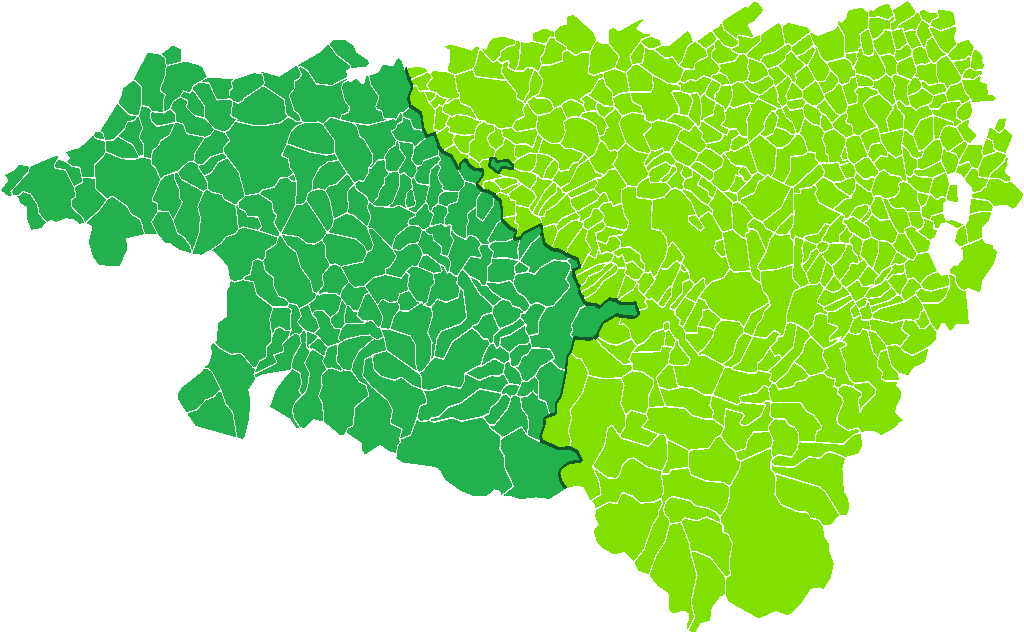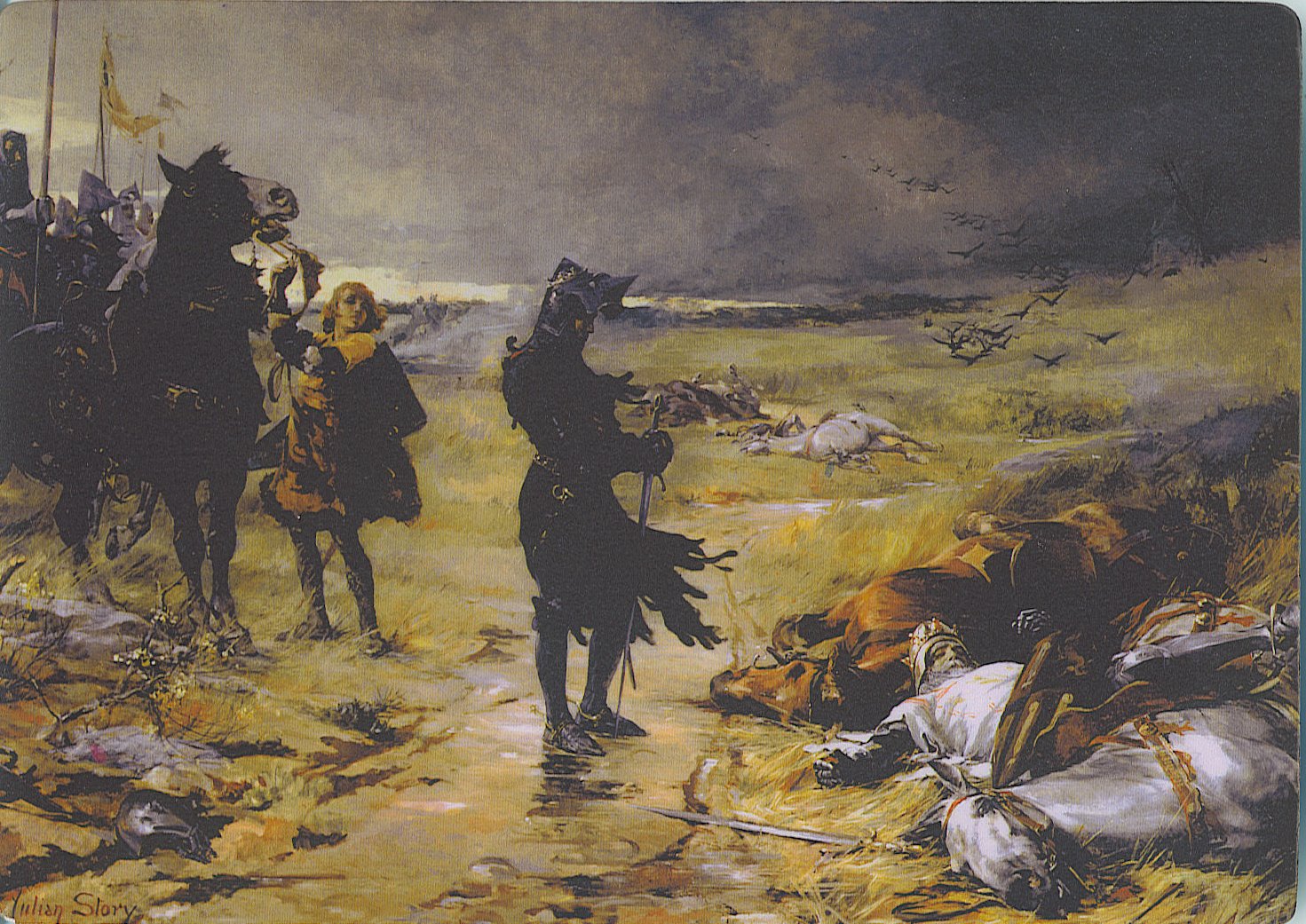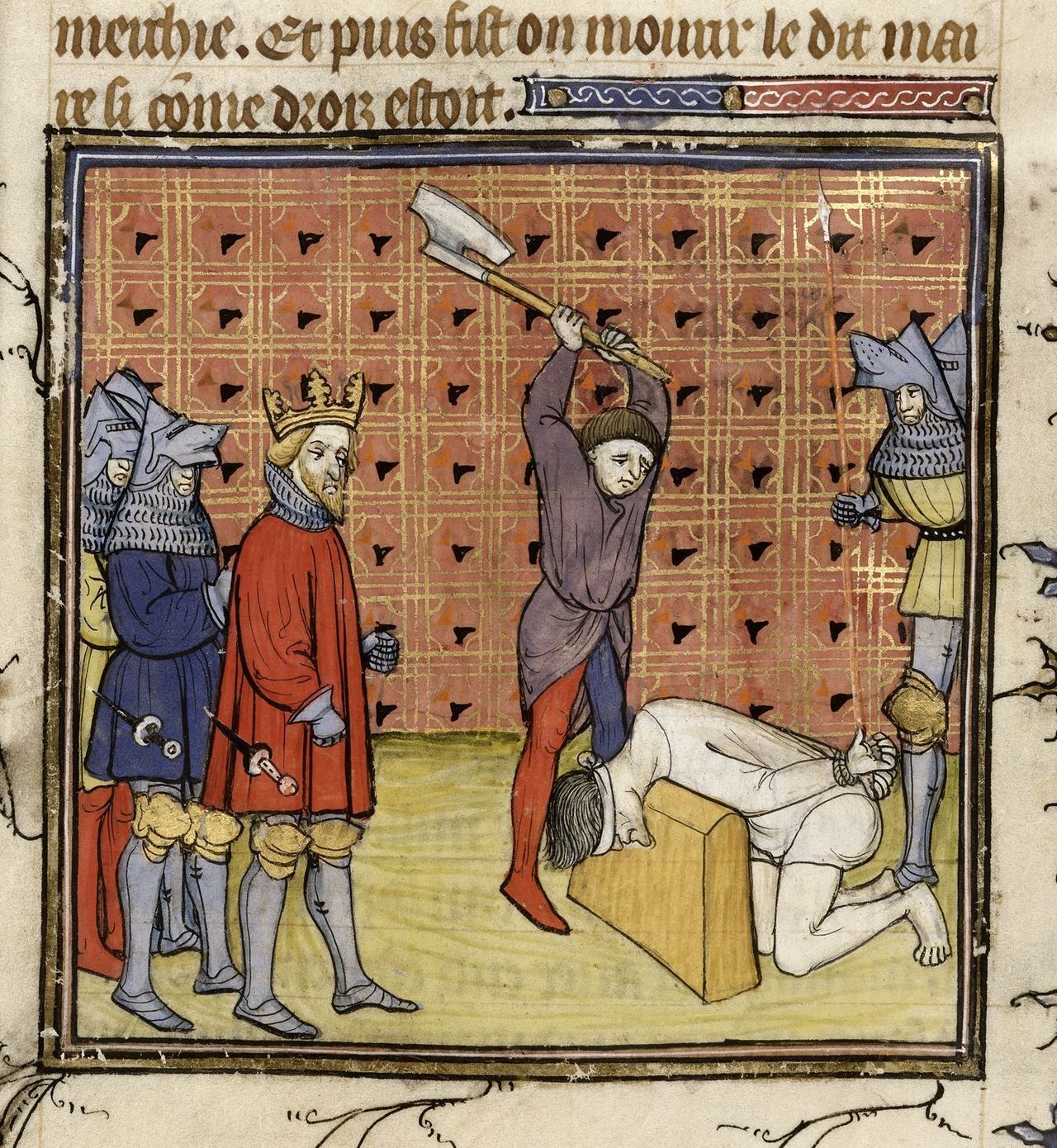|
Gaston III, Comte De Foix
Gaston Fébus (also spelt Phoebus) (30 April 1331 – 1391) was the eleventh count of Foix (as Gaston III) and twenty-fourth viscount of Béarn (as Gaston X) from 1343 until his death. Early life Gaston was born either in Orthez or Foix, the eldest son of Gaston II of Foix-Béarn, Gaston II/IX (1308–1343). As the lord's eldest son, he was given the dynastic name, Gaston. He later adopted Fébus as a nickname. In its classic spelling, Phoebus, it is one of the names of the sun-god, Apollo, and is apt because of Gaston Fébus's golden hair. His native language was Gascon language, Gascon (a dialect of Old Occitan, Occitan), but he was also fluent in Old French, French. He wrote a treatise on hunting in French, and an Occitan song, ''Se Canta'', has been ascribed to him. One contemporary chronicler, Jean Froissart, records that he "very willingly spoke to me not in his native Gascon but in proper and elegant French".Paul Cohen, "Linguistic Politics on the Periphery: Louis XIII, B� ... [...More Info...] [...Related Items...] OR: [Wikipedia] [Google] [Baidu] |
Orthez
Orthez (; eu, Ortheze; oc, Ortès, ) is a commune in the Pyrénées-Atlantiques department, and region of New Aquitaine, southwestern France. It lies 40 km NW of Pau on the Southern railway to Bayonne. The town also encompasses the small village of Sainte-Suzanne, an independent commune until 1973; residents of the town are called either ''Orthéziens'' or ''Sainte-Suzannais''. Geography Orthez straddles the westward-flowing Gave de Pau, with most of the town proper having developed on the right bank. Several residential developments and an industrial park are located on the left bank, in addition to Sainte-Suzanne, an associated village entity within the town. A partially artificial lake called 'Lac de l'y grec' (usually just spelled 'Lac de l'Y' i.e. 'Y Lake') () has a pleasant, scenic walking trail. Orthez station has rail connections to Tarbes, Pau, Bordeaux and Bayonne. History During the 12th century, Orthez was the capital of Béarn, after Morlaàs and before P ... [...More Info...] [...Related Items...] OR: [Wikipedia] [Google] [Baidu] |
Béarn
The Béarn (; ; oc, Bearn or ''Biarn''; eu, Bearno or ''Biarno''; or ''Bearnia'') is one of the traditional provinces of France, located in the Pyrenees mountains and in the plain at their feet, in southwest France. Along with the three Basque provinces of Soule, Lower Navarre, and Labourd, the Principality of Bidache, as well as small parts of Gascony, it forms in the southwest the current ''département'' of Pyrénées-Atlantiques (64). The capitals of Béarn were Beneharnum (until 841), Morlaàs (from ca. 1100), Orthez (from the second half of the 13th century), and then Pau (beginning in the mid-15th century). Béarn is bordered by Basque provinces Soule and Lower Navarre to the west, by Gascony ( Landes and Armagnac) to the north, by Bigorre to the east, and by Spain (Aragon) to the south. Today, the mainstays of the Béarn area are the petroleum industry, the aerospace industry through the helicopter turboshaft engine manufacturer Turbomeca, tourism and agriculture ... [...More Info...] [...Related Items...] OR: [Wikipedia] [Google] [Baidu] |
Crown Of Aragon
The Crown of Aragon ( , ) an, Corona d'Aragón ; ca, Corona d'Aragó, , , ; es, Corona de Aragón ; la, Corona Aragonum . was a composite monarchy ruled by one king, originated by the dynastic union of the Kingdom of Aragon and the County of Barcelona and ended as a consequence of the War of the Spanish Succession. At the height of its power in the 14th and 15th centuries, the Crown of Aragon was a thalassocracy controlling a large portion of present-day eastern Spain, parts of what is now southern France, and a Mediterranean empire which included the Balearic Islands, Sicily, Corsica, Sardinia, Malta, Southern Italy (from 1442) and parts of Greece (until 1388). The component realms of the Crown were not united politically except at the level of the king, who ruled over each autonomous polity according to its own laws, raising funds under each tax structure, dealing separately with each ''Corts'' or ''Cortes'', particularly the Kingdom of Aragon, the Principality of Catalonia, ... [...More Info...] [...Related Items...] OR: [Wikipedia] [Google] [Baidu] |
Crown Of Castile
The Crown of Castile was a medieval polity in the Iberian Peninsula that formed in 1230 as a result of the third and definitive union of the crowns and, some decades later, the parliaments of the kingdoms of Castile and León upon the accession of the then Castilian king, Ferdinand III, to the vacant Leonese throne. It continued to exist as a separate entity after the personal union in 1469 of the crowns of Castile and Aragon with the marriage of the Catholic Monarchs up to the promulgation of the Nueva Planta decrees by Philip V in 1715. In 1492, the voyage of Christopher Columbus and the discovery of the Americas were major events in the history of Castile. The West Indies, Islands and Mainland of the Ocean Sea were also a part of the Crown of Castile when transformed from lordships to kingdoms of the heirs of Castile in 1506, with the Treaty of Villafáfila, and upon the death of Ferdinand the Catholic. The discovery of the Pacific Ocean, the Conquest of the Aztec Empir ... [...More Info...] [...Related Items...] OR: [Wikipedia] [Google] [Baidu] |
Kingdom Of Navarre
The Kingdom of Navarre (; , , , ), originally the Kingdom of Pamplona (), was a Basque kingdom that occupied lands on both sides of the western Pyrenees, alongside the Atlantic Ocean between present-day Spain and France. The medieval state took form around the city of Pamplona during the first centuries of the Iberian Reconquista. The kingdom has its origins in the conflict in the buffer region between the Carolingian Empire and the Emirate of Córdoba, Umayyad Emirate of Córdoba that controlled most of the Iberian Peninsula. The city of Pamplona (; ), had been the main city of the indigenous Vascones, Vasconic population and was located amid a predominantly Basque-speaking area. In an event traditionally dated to 824, Íñigo Arista of Pamplona, Íñigo Arista was elected or declared ruler of the area around Pamplona in opposition to Francia, Frankish expansion into the region, originally as vassal to the Córdoba Emirate. This polity evolved into the Kingdom of Pamplona. In the ... [...More Info...] [...Related Items...] OR: [Wikipedia] [Google] [Baidu] |
Cistercians
The Cistercians, () officially the Order of Cistercians ( la, (Sacer) Ordo Cisterciensis, abbreviated as OCist or SOCist), are a Catholic religious order of monks and nuns that branched off from the Benedictines and follow the Rule of Saint Benedict, as well as the contributions of the highly-influential Saint Bernard of Clairvaux, known as the Latin Rule. They are also known as Bernardines, after Saint Bernard himself, or as White Monks, in reference to the colour of the "cuculla" or cowl (choir robe) worn by the Cistercians over their habits, as opposed to the black cowl worn by Benedictines. The term ''Cistercian'' derives from ''Cistercium,'' the Latin name for the locale of Cîteaux, near Dijon in eastern France. It was here that a group of Benedictine monks from the monastery of Molesme founded Cîteaux Abbey in 1098, with the goal of following more closely the Rule of Saint Benedict. The best known of them were Robert of Molesme, Alberic of Cîteaux and the English ... [...More Info...] [...Related Items...] OR: [Wikipedia] [Google] [Baidu] |
Chevauchée
A ''chevauchée'' (, "promenade" or "horse charge", depending on context) was a raiding method of medieval warfare for weakening the enemy, primarily by burning and pillaging enemy territory in order to reduce the productivity of a region, in addition to siege warfare most often as part of wars of conquest but occasionally as a punitive raid. The use of the ''chevauchée'' declined at the end of the 14th century as the focus of warfare turned to sieges. It is conceptually similar to the scorched earth strategies used in modern warfare. In the Iberian peninsula, this type of raid was usually called a ''cabalgada''cabalgada in the Diccionario de la Real Academia Española. (older spelling: ''cavalgada''). The [...More Info...] [...Related Items...] OR: [Wikipedia] [Google] [Baidu] |
Edward The Black Prince
Edward of Woodstock, known to history as the Black Prince (15 June 1330 – 8 June 1376), was the eldest son of King Edward III of England, and the heir apparent to the English throne. He died before his father and so his son, Richard II, succeeded to the throne instead. Edward nevertheless earned distinction as one of the most successful English commanders during the Hundred Years' War, being regarded by his English contemporaries as a model of chivalry and one of the greatest knights of his age. Edward was made Duke of Cornwall, the first English dukedom, in 1337. He was guardian of the kingdom in his father's absence in 1338, 1340, and 1342. He was created Prince of Wales in 1343 and knighted by his father at La Hougue in 1346. In 1346, Prince Edward commanded the vanguard at the Battle of Crécy, his father intentionally leaving him to win the battle. He took part in Edward III's 1349 Calais expedition. In 1355, he was appointed the king's lieutenant in Gascony, a ... [...More Info...] [...Related Items...] OR: [Wikipedia] [Google] [Baidu] |
Charles II Of Navarre
Charles II (10 October 1332 – 1 January 1387), called Charles the Bad, was King of Navarre 1349–1387 and Count of Évreux 1343–1387. Besides the Pyrenean Kingdom of Navarre, Charles had extensive lands in Normandy, inherited from his father, Count Philip of Évreux, and his mother, Queen Joan II of Navarre, who had received them as compensation for resigning her claims to France, Champagne, and Brie in 1328. Thus, in Northern France, he possessed Évreux, Mortain, parts of Vexin, and a portion of Cotentin. Charles was a major player at a critical juncture in the Hundred Years' War between France and England, repeatedly switching sides in order to further his own agenda. He was accidentally burned alive in 1387. Life Early life Charles was born in Évreux, the son of Philip of Évreux, and Joan II of Navarre. His father was first cousin to King Philip VI of France, while his mother, Joan, was the only child of King Louis X. Charles of Navarre was 'born of the ''fleur de lys'' ... [...More Info...] [...Related Items...] OR: [Wikipedia] [Google] [Baidu] |
Languedoc
The Province of Languedoc (; , ; oc, Lengadòc ) is a former province of France. Most of its territory is now contained in the modern-day region of Occitanie in Southern France. Its capital city was Toulouse. It had an area of approximately 42,700 square kilometers (16,490 square miles). History The Roman province of Gallia Narbonensis fell to the Visigothic Kingdom from the 5th to the 8th centuries. Occupied briefly by the Emirate of Córdoba between 719 and 759, it was conquered and incorporated into the Kingdom of the Franks by Pippin the Short in 759 following the Siege of Narbonne. Under the Carolingians, the counts of Toulouse were appointed by the royal court. Later, this office became hereditary. Part of the territory where Occitan was spoken came to be called ''langue d'oc'', ''Lengadòc'' or Languedoc. In the 13th century, the spiritual beliefs of the area were challenged by the See of Rome and the region became attached to the Kingdom of France following the ... [...More Info...] [...Related Items...] OR: [Wikipedia] [Google] [Baidu] |
John I, Count Of Armagnac
John I of Armagnac (French: Jean d’Armagnac; 1311 – 16 May 1373), son of Bernard VI and Cecilia Rodez, was Count of Armagnac from 1319 to 1373. In addition to Armagnac he controlled territory in Quercy, Rouergue and Gévaudan. He was the count who initiated the 14th century expansion of the county. Hundred Years War In summer 1337, with the outbreak of the Hundred Years War, he provided a contingent of 6,000 men for the campaign of Raoul I of Eu, Constable of France, in Gascony. In July 1338, he attended a general conference at La Réole, but before achieving anything of note, John and his fellow captain-general in the south, Gaston II, Count of Foix, were called north to help counter the expected invasion of Northern France by King Edward III of England. As this threat grew weaker the French offensive in the south was resumed with the siege of Penne-d'Agenais in November by John of Bohemia and the Count of Foix. John provided 1,200 men for this siege, which ended with the s ... [...More Info...] [...Related Items...] OR: [Wikipedia] [Google] [Baidu] |
House Of Armagnac
The House of Armagnac is a French noble house established in 961 by Bernard I, Count of Armagnac. It achieved its greatest importance in the fourteenth and fifteenth centuries. The House of Armagnac, at the end of the thirteenth century, was not yet powerful enough to play a political role beyond its possessions. The House of Toulouse, which ruled over the large southeast of France, was defeated by the Capetians during the Albigensian Crusade, but local dynasties, like the House of Foix, the Counts of Comminges and the House of Albret, were gaining momentum. At the beginning of the fourteenth century, the Armagnacs reached the rank of great feudal lords with the legacy of the County of Rodez. This heritage, combined with its Gascon lands, allowed the family to hold a rank of major importance in the heart of the nobility and, therefore, to ally itself to the royal House of France. Between the fourteenth and fifteenth century, the Armagnacs came into possession of other territories ... [...More Info...] [...Related Items...] OR: [Wikipedia] [Google] [Baidu] |





